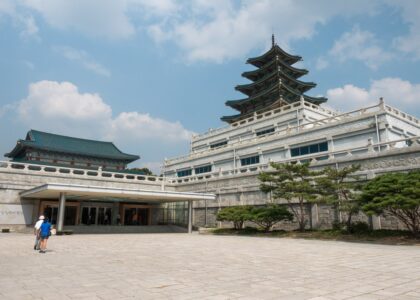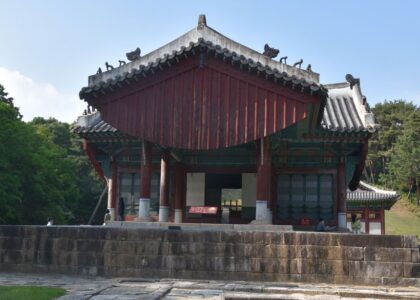Tapgol Park (탑골 공원), located in the Jongno district near Insadong, holds immense historical significance as Seoul’s first modern public park, officially opening in 1897. The site’s history dates back much further, originally hosting the Wongaksa Temple during the Goryeo and Joseon Dynasties.
The park derives its name from its most famous relic: the Wongaksa Pagoda (National Treasure No. 2). This 10-story marble pagoda, built in 1467, is now protected inside a glass enclosure and is one of the few remaining structures from the former temple complex.
Tapgol Park’s most celebrated role is as the birthplace of the March 1st Movement in 1919, Korea’s massive non-violent protest against Japanese colonial rule. The Korean Declaration of Independence was first publicly read here at the Palgakjeong (Octagonal Pavilion). The park features monuments and reliefs commemorating the patriots involved in this pivotal event.
Today, it serves as a peaceful urban retreat where elderly residents often gather to play traditional board games like Baduk (Go). With its blend of ancient Buddhist relics, symbols of national struggle, and tranquil resting spots, Tapgol Park offers a deep connection to Korea’s past while remaining a vibrant part of modern Seoul life.








